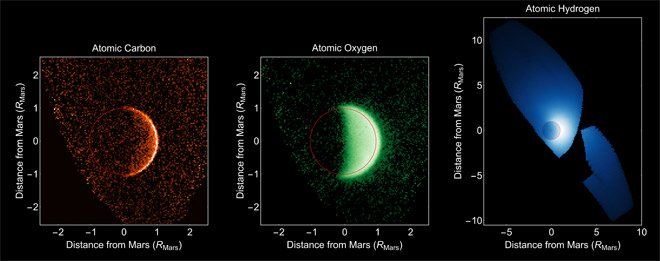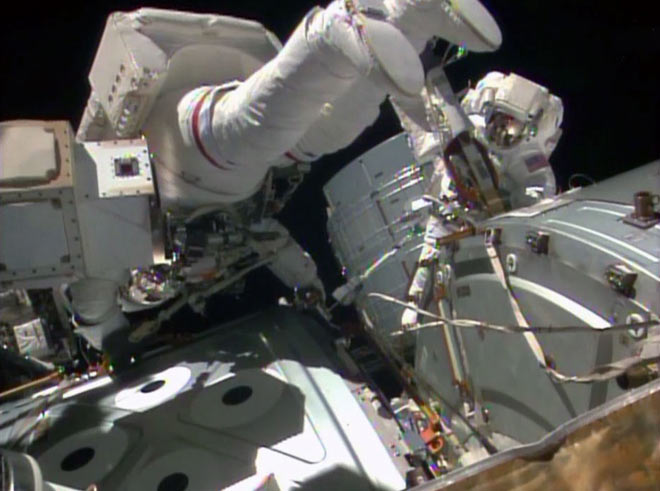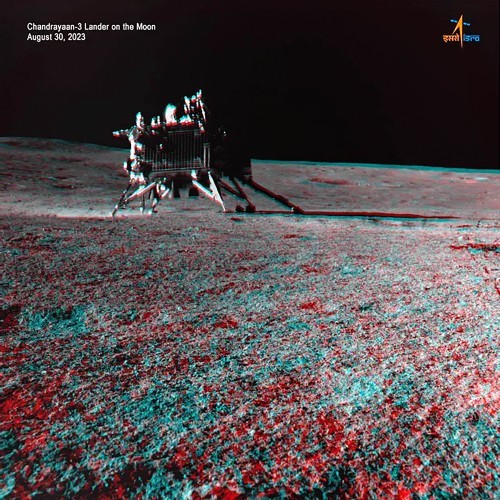
Three views of an escaping atmosphere, obtained by MAVEN's Imaging Ultraviolet Spectrograph. By observing all of the products of water and carbon dioxide breakdown, MAVEN's remote sensing team can characterise the processes that drive atmospheric loss on Mars. Photo: University of Colorado/NASA.
WASHINGTON (PTI): NASA's Maven spacecraft has given scientists their first glimpse of the mysterious upper atmosphere of Mars, which has baffled them for decades.
The Mars Atmosphere and Volatile Evolution (MAVEN) spacecraft provided scientists their first look at a storm of energetic solar particles at Mars, produced unprecedented ultraviolet images of the tenuous oxygen, hydrogen, and carbon coronas surrounding the Red Planet.
The spacecraft also yielded a comprehensive map of highly variable ozone in the atmosphere underlying the coronas.
Maven, which entered Mars' orbit on September 21, now is lowering its orbit and testing its instruments. The spacecraft was launched in November 2013 to help solve the mystery of how the Red Planet lost most of its atmosphere.
"All the instruments are showing data quality that is better than anticipated at this early stage of the mission," said Bruce Jakosky, MAVEN principal investigator at the University of Colorado, Boulder.
Solar energetic particles (SEPs) are streams of high-speed particles blasted from the Sun during explosive solar activity like flares or coronal mass ejections (CMEs).
Around Earth, SEP storms can damage the sensitive electronics on satellites. At Mars, they are thought to be one possible mechanism for driving atmospheric loss.
"After travelling through interplanetary space, these energetic particles of mostly protons deposit their energy in the upper atmosphere of Mars," said SEP instrument lead Davin Larson of the Space Sciences Laboratory at the University of California, Berkeley.
"A SEP event like this typically occurs every couple weeks. Once all the instruments are turned on, we expect to also be able to track the response of the upper atmosphere to them," said Larson.
The hydrogen and oxygen coronas of Mars are the tenuous outer fringe of the planet's upper atmosphere, where the edge of the atmosphere meets space.
In this region, atoms that were once a part of carbon dioxide or water molecules near the surface can escape to space.
These molecules control the climate, so following them allows us to understand the history of Mars over the last four billion years and to track change from a warm and wet climate to the cold, dry climate we see today, researchers said.
MAVEN observed the edges of the Martian atmosphere using the Imaging Ultraviolet Spectrograph (IUVS), which is sensitive to the sunlight reflected by these atoms.
"With these observations, MAVEN's IUVS has obtained the most complete picture of the extended Martian upper atmosphere ever made," said MAVEN remote sensing team member Mike Chaffin of the University of Colorado, Boulder.
"By measuring the extended upper atmosphere of the planet, MAVEN directly probes how these atoms escape to space.
The observations support our current understanding that the upper atmosphere of Mars, when compared to Venus and Earth, is only tenuously bound by the Red Planet's weak gravity," said Chaffin.
 Next Article
Next Article








The Indian Air Force, in its flight trials evaluation report submitted before the Defence Ministry l..
view articleAn insight into the Medium Multi-Role Combat Aircraft competition...
view articleSky enthusiasts can now spot the International Space Station (ISS) commanded by Indian-American astr..
view article